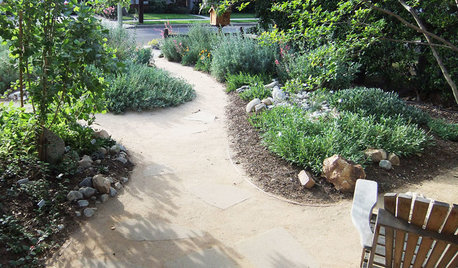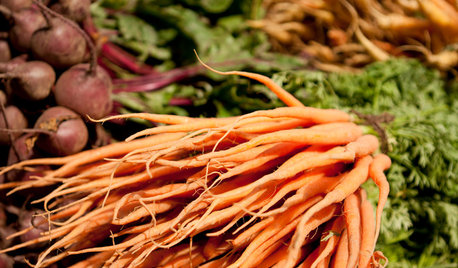How to 'Know' When It Is Time To Water
15 years ago
Related Stories

CONTAINER GARDENSContainer Garden Basics: How and When to Water Potted Plants
Confused about soil moisture, the best time to water and what watering device to use? This guide can help
Full Story
GARDENING GUIDES5 Things to Know About Watering Your Native Garden
Ensure the success of your new plantings with a smart approach to irrigation
Full Story
ARCHITECTUREWant to Live by the Water? What You Need to Know
Waterside homes can have amazing charm, but you'll have to weather design restrictions, codes and surveys
Full Story
FURNITUREKnow When to Fold 'Em
When space is tight, look for furniture that cleverly collapses, expands or fills more than one role
Full Story
GARDENING AND LANDSCAPINGWhat You Need to Know When Considering a Cabana or Covered Patio
Learn how to plan for a covered outdoor structure, what features are available to you, how much it will cost and more
Full Story
FARM YOUR YARDWhen to Harvest Vegetables and Fruits
Get the most from your garden by knowing the best times to pick different edibles
Full Story
DINING ROOMSNew This Week: These Dining Rooms Know How to Have a Good Time
You can add some fun to your room decor, whether your taste is traditional, contemporary or something in between
Full Story
CONTRACTOR TIPSBuilding Permits: When a Permit Is Required and When It's Not
In this article, the first in a series exploring permit processes and requirements, learn why and when you might need one
Full Story
FARM YOUR YARD6 Things to Know Before You Start Growing Your Own Food
It takes time and practice, but growing edibles in the suburbs or city is possible with smart prep and patience
Full Story
GARDENING GUIDES5 Things to Know About Weeding and Mulching Your Native Garden
What’s the best time to pull weeds? How thick should the mulch be? Here’s the scoop for a healthy landscape
Full Story


susanlynne48
Okiedawn OK Zone 7Original Author
Related Discussions
How do you know when you need to water?
Q
Timing of plantings; how do YOU know 'when'
Q
How do you know/decide when it's time to move on?
Q
Elderly dog: How do you know when it's time?
Q
Lisa_H OK
Okiedawn OK Zone 7Original Author